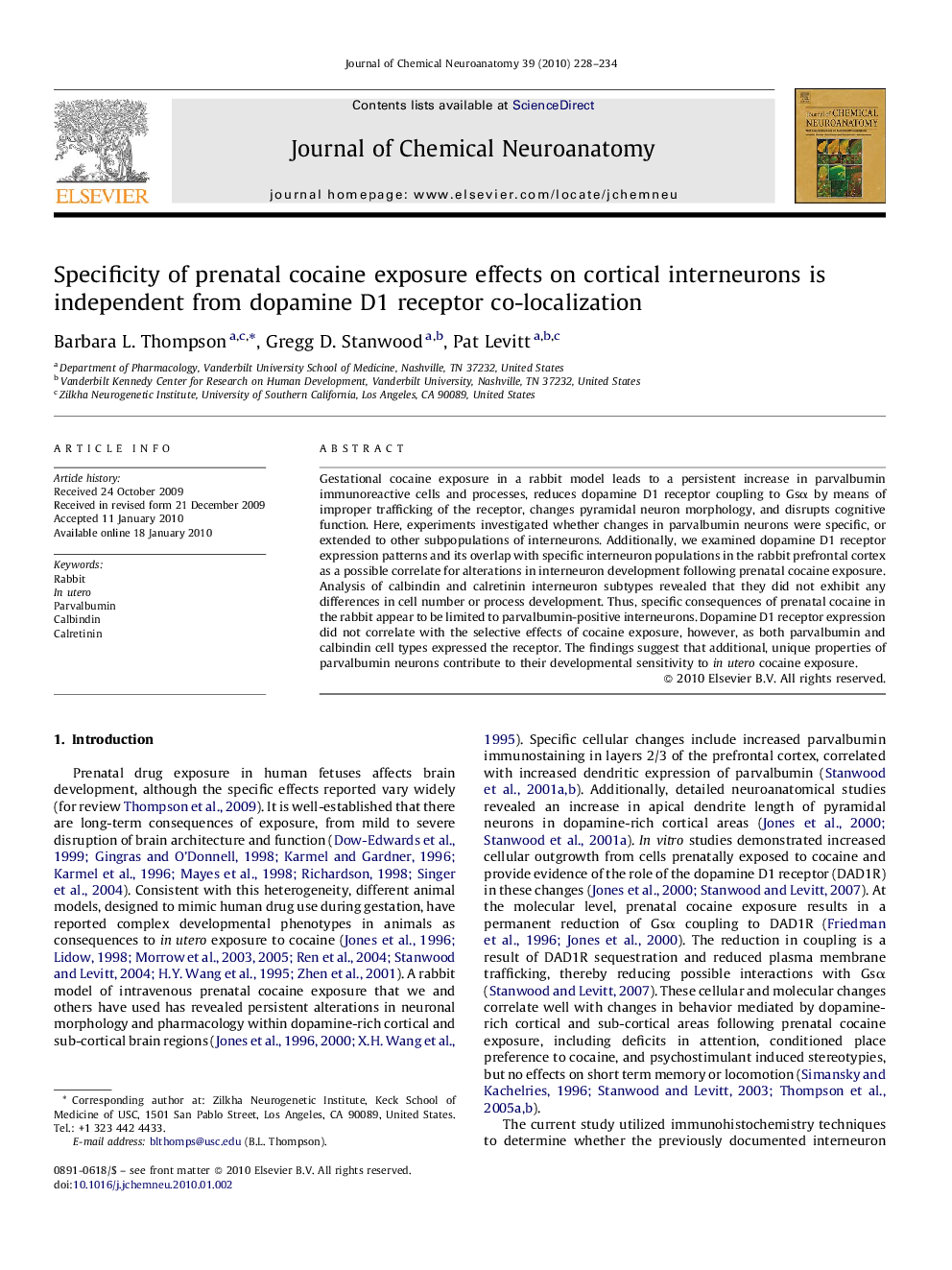| Article ID | Journal | Published Year | Pages | File Type |
|---|---|---|---|---|
| 1989133 | Journal of Chemical Neuroanatomy | 2010 | 7 Pages |
Gestational cocaine exposure in a rabbit model leads to a persistent increase in parvalbumin immunoreactive cells and processes, reduces dopamine D1 receptor coupling to Gsα by means of improper trafficking of the receptor, changes pyramidal neuron morphology, and disrupts cognitive function. Here, experiments investigated whether changes in parvalbumin neurons were specific, or extended to other subpopulations of interneurons. Additionally, we examined dopamine D1 receptor expression patterns and its overlap with specific interneuron populations in the rabbit prefrontal cortex as a possible correlate for alterations in interneuron development following prenatal cocaine exposure. Analysis of calbindin and calretinin interneuron subtypes revealed that they did not exhibit any differences in cell number or process development. Thus, specific consequences of prenatal cocaine in the rabbit appear to be limited to parvalbumin-positive interneurons. Dopamine D1 receptor expression did not correlate with the selective effects of cocaine exposure, however, as both parvalbumin and calbindin cell types expressed the receptor. The findings suggest that additional, unique properties of parvalbumin neurons contribute to their developmental sensitivity to in utero cocaine exposure.
